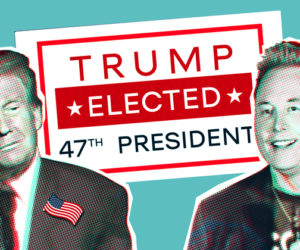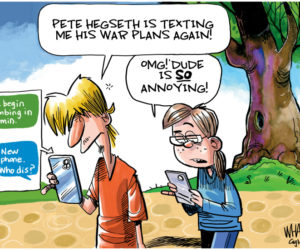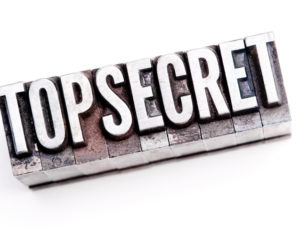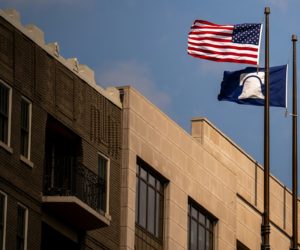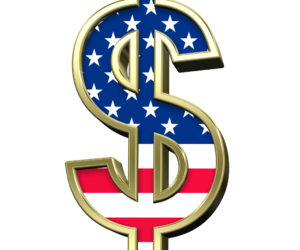Is the United States inching back bit by bit to the 1960s, where demonstrations and counter demonstrations were all the rage (literally and figuratively)? It could be. First came the conservative Tea Party movement with the angry town hall meetings and demonstrations of summer-fall 2010, which impacted the 2010 elections. Now come signs that the country’s left is toying with demonstrations that set up confrontations with police — demonstrations that this time have a broader theme than anti-war. The high profile sign: 700 people being arrested at a protest on the Brooklyn Bridge:
In a tense showdown above the East River, the police arrested more than 700 demonstrators from the Occupy Wall Street protests who took to the roadway as they tried to cross the Brooklyn Bridge on Saturday afternoon.
The police said it was the marchers’ choice that led to the enforcement action.
“Protesters who used the Brooklyn Bridge walkway were not arrested,” Paul J. Browne, the chief spokesman for the New York Police Department, said. “Those who took over the Brooklyn-bound roadway, and impeded vehicle traffic, were arrested.”
But many protesters said they believed the police had tricked them, allowing them onto the bridge, and even escorting them partway across, only to trap them in orange netting after hundreds had entered.
“The cops watched and did nothing, indeed, seemed to guide us onto the roadway,” said Jesse A. Myerson, a media coordinator for Occupy Wall Street who marched but was not arrested.
A video on the YouTube page of a group called We Are Change shows some of the arrests.
Notably here, the phrase “The whole world is watching” is one that was chanted during 1968, during anti-war demonstrations and at the Democratic Convention in Chicago, when Mayor Richard Daley decided to crack down on protesters. Over the years, it has been clear that for whatever reason, when police arrest demonstrations it seems to help increase the number of protesters at future demonstrations.
The Huffington Post notes that these protests are over a growing issue: “inequality’ in American life in a bad economy:
As HuffPost reported recently, the movement is less about specific policy demands and more about an expression of opposition to ever yawning economic inequality driven by Wall Street and its allies in Washington.
Calling themselves an American revolution, the protesters say they plan to stay in the park indefinitely.
George Basta, an official with New York Communities for Change, said that the organizers were encouraged by police to march on the street area of the Brooklyn Bridge, instead of the walkway, then subsequently arrested them for marching in traffic. Two lead organizers, Jonathan Westin and Pete Nagy, were penned in by police. Westin managed to exit the police pen, but Nagy is missing and presumed detained by police, Basta told HuffPost.
“Police say some demonstrators spilled onto the roadway Saturday night after being told to stay on the pedestrian pathway,” the Associated Press reported.
Similar demonstrations started Saturday in Washington and Los Angeles.
Shon Botado, a protester staffing a first aid station in New York, told The Huffington Post on Friday that he’s not leaving “until change is made to the financial structure.”
One of the basic purposes of many big demonstrations (from Mahatma Gandhi to Martin Luther King, Jr to the anti-war demonstrations of the 60s) is to get publicity and use any police overreaction or backlash sparked by arrests to help a movement grow. Many recruits for demonstrations come from the ranks of more youthful members of society (but not always) who are more willing to get on the street and become involved. In the case of this demonstration, organizers have indicated they plan to be there for more than one or two days:
A protest in New York dubbed “Occupy Wall Street” appears to be settling in for the long term. Twice a day, protesters leave the tents, makeshift kitchen and free bookstore set up in Zuccotti Park in lower Manhattan and begin a slow march down the sidewalk.
Anywhere from hundreds to thousands of supporters are showing up for marches each day. A protest on the Brooklyn Bridge Saturday resulted in about 700 arrests. Another major demonstration is set for mid-week as union members join protesters.
Pick just about any cause, including the execution of Troy Davis in Georgia in September, and it’s likely represented here. The primary focus is on corporations, the wealthy and income distribution.
The objective, as protester Mike Luciano from Pennsylvania it, is “taking the big cats down, bringing down Wall Street, changing how the government works and the dirty deals are done.”
Luciano says he belongs to a union. Given recent reports that local organized labor is starting to get behind the protest, he expected to see more fellow union members.
Next Wednesday afternoon, several unions are planning a march from City Hall to the protest site. That day there likely will be only one march.
“We have been in the past doing two — one at 9 and one at 4 … for the opening and closing bells,” says Victoria Sobel, a college student at Cooper Union and a protest organizer. “I believe we are moving toward one march a day to have a bigger march.”
If marches and protests such as this go on several things could happen:
So there are the seeds in this protest — coming in the context of American 21st century political polarization, and the growth of the Tea Party movement — for now seeing the left clamoring just as the right did in the summer of 2010 with a debate in coming years about which side did it better and, in the end, which side helped its side or handed a big, fat political gift to its political enemies.
ABC News adds a bit more perspective on something that might have had an impact on this protest’s numbers — and whether it’s limited to New York state:
The turnout may have been so high because a rumor circulated that the band Radiohead would perform at the event. The band did not appear at event.
New York City Mayor Michael Bloomberg addressed the demonstrations on the WOR 710 radio show Friday, according to multiple media reports.
“The protesters are protesting against people who make $40,000 to $50,000 a year who are struggling to make ends meet. That’s the bottom line,” Bloomberg said.
When asked how the NYPD would handle protests, Bloomberg said that while people have the right to protest, others also have the right “to walk down the street unmolested.”
The protests have spread across the country, with events popping up in Boston, Chicago and dozens of other cities across the country in solidarity with Occupy Wall Street.
In Albuquerque, N.M., there were more than 500 protestors, and demonstrators in Spokane, Wash., set up a tent city before police enforced a no-camping rule.
A march and rally was held in Boston Friday called “Take Back Boston” run by the Right to the City alliance, a national organization that “seeks to create regional and national impacts in the fields of housing, human rights, urban land, community development, civic engagement, criminal justice, environmental justice, and more,” according to its website.
Police estimated about 3,000 people attended the events Friday.
“We are targeting Wall Street, in particular the big banks and corporations,” Rachel Laforest, the executive director of the Right to the City Alliance told ABC News. “The goal is to create a national narrative and have it be known how the states are taking state revenues that are being funneled to banks and corporations and then you layer on top of that the fact that they’re not obligated to pay their fair share of taxes, and so that’s billions and billions of dollars that could be put toward job creation and creating solutions to the housing crisis.”
As police arrested hundreds of protesters on the Brooklyn Bridge in New York City, more demonstrations began to spring up across the U.S.
In Los Angeles, protesters gathered in front of City Hall and danced on buses with “peace” emblazoned on the side.
A smaller protest was held in Chicago’s financial district where protesters held placards demanding “Jobs Not Cuts”.
Protesters also turned out in Denver, gathering downtown before marching into the city chanting, “Occupy the streets.”
All the protests were inspired by the Occupy Wall Street movement which has seen hundreds of people camping out near the financial district in New York City and conducting marches calling for an end to home foreclosures and high unemployment.
Some on the left are already saying this is the seeds of an American “Arab spring.” One of those is leftist filmmaker Michael Moore. Given his record on predicting with accuracy future political events, perhaps this refers to an Arab spring mattress. But here’s what he had to say in an interview:
“This is literally an uprising of people who have had it,” Moore says. “It has already started to spread across the country in other cities. It will continue to spread. … It will be tens of thousands and hundreds of thousands of people … Their work ahead is not as difficult as other movements in the past … The majority of Americans are really upset at Wall Street … So you have already got an army of Americans who are just waiting for somebody to do something, and something has started.”
The little thing Moore leaves out is that when something happens then there is a reaction on the other side and something else happens. Big demonstrations do help protesters and those who support them mobilize, publicize and possibly pick up support. But demonstrations also swell the ranks of those on the other side who don’t like the tactics, disruption or message of the other side. Those who support the general goals of the demonstrators — for instance, how Barack Obama and prominent Democrats respond to questions about demonstrations should they grow or there be some incident — can drive voters to the polls. Not all will be supportive of the demonstrators.
So the question in coming weeks becomes: will this become an isolated demonstration or lead to the equivalent of the Tea Party movement on the left, infused with a sense of deja vu with echoes of anti-Vietnam demonstrations during the LBJ era and anti-Iraq War demonstrations during the Geoge W. Bush era? And, if, so, how will this impact America’s already polarized, increasingly emotional political state in a time when due to the sagging economy patience and civility on both sides is wearing thin?
UPDATE: Time Magazine:
Around 7pm, as a cold rain fell steadily on the bridge, police loaded the last of the last of the marchers into a half-empty city bus. Signs and flyers littered the roadway, including the one from Christine Velez poking fun at Mitt Romney and Rick Perry. Back at Zuccotti Park, the mood was a mixture of ebullience and concern. Legal observers worked their cell phones, trying to track down those arrested. Even with several hundred of their compatriots on their way to various police precincts, more than a thousand people cheered on a drum circle, debated ideas and tried to dry off from the cold rain. One woman at the Broadway entrance held a sign, quoting poet Gil Scott Heron that read, “The Revolution Will Not Be Televised.” Perhaps not, but the people who came to the park three weeks ago hope that it will continue to grow as it enters week four.
Joe Gandelman is a former fulltime journalist who freelanced in India, Spain, Bangladesh and Cypress writing for publications such as the Christian Science Monitor and Newsweek. He also did radio reports from Madrid for NPR’s All Things Considered. He has worked on two U.S. newspapers and quit the news biz in 1990 to go into entertainment. He also has written for The Week and several online publications, did a column for Cagle Cartoons Syndicate and has appeared on CNN.


